This is my third collaborative project with Dave
Bruckenstein. We call this one the Light Guide Clock
due to the 1/2" acrylic rods inside that guide the light
from LEDs in the back to the clock face. The original
premise was to create a sense of magic so that people would
wonder how the light got to the face. It turns out
that the walls of the rods are more visible than we
expected, but we like the result nonetheless.
Dave likes to do CAD visualizations as the design evolves
and we explore options for materials and technology.
We started with a very basic rectangular wood base and it
evolved as we worked out the cylindrical clock "mechanism"
as a removable module. |
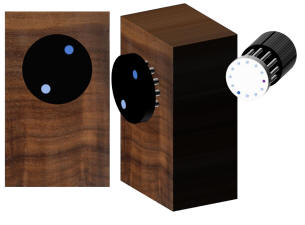 |
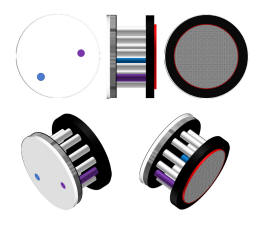 |
|
Below is the final design - we later added a clear cylinder
to keep the dust off the light guides. |
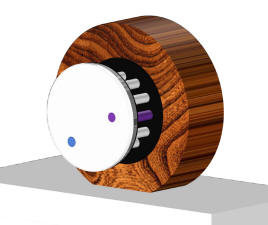 |
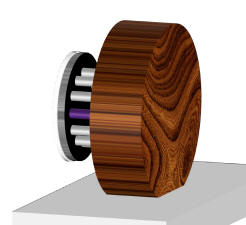 |
|
In the image below right - the time displayed is 8:05.
The blue dot is the hour and the red one shows the minutes
to the nearest 5, so it is not that accurate for any given
minute. What is neat is that when the hands overlap at
say 1:05 there is just one dot that shows as purple since
the colors combine. This makes reading the time a
little inscrutable which is an essential part of Dave's
concept for his clocks. |
_small.jpg) |
_small.jpg) |
| Once we had settled on the
dimensions I designed a circuit board with programmable RGB
LEDs on the front and circuitry on the back. This
design incorporates a real time clock chip with battery
backup so it can retain the correct time even if left
unplugged for weeks. There are 2 set buttons that
allow you to adjust for daylight savings time. |
_small.jpg) |
_small.jpg) |
Once that was assembled, I had to program the light
sequences and get the real time clock code working which
took way longer than anticipated due to the weird number
format used in the clock chip to represent time. (For
you geeks, it uses binary coded decimal).
My next step was to construct the cylindrical assembly.
We both gave the dimensions of the black and white material
a lot of thought. So the front has 1/8" translucent
white for the clock face, and that is backed by 1/4" black
to support the light guides and to isolate the dots of
light. The back has a 1/2" thick piece of black that
also supports the PCB and the light guides that are made of
1/2" diameter acrylic rods. There are 3 magnets that
align with 3 in the case so that the module indexes into the
correct orientation and is held in place firmly. You
need to pull the module out to set the time. |
_small.jpg) |
_small.jpg) |
|
Finally I acquired a nice piece of black walnut that I cut
and glued up to get the thickness we wanted. Then I
turned it on my lathe. |
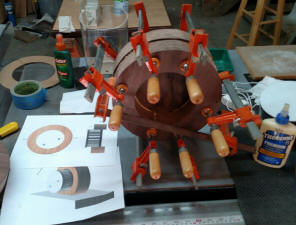 |
_small.jpg) |
| In Dave's CAD model he had
visualized the wood as a perfect cylinder. But As I
worked the wood I felt that a rounded back would look and
feel "warmer" to the touch. |
_small.jpg) |
_small.jpg) |
_small.jpg) |
_small.jpg) |
| |
|
|
|
|
|